There are poisonous houseplants for dogs and cats. Some are mildly poisonous, and some are fatal. It is better to know about them if you own a pet that’s why we’ve listed 34 plants toxic to dogs.
The purpose of this article is not to discourage you from growing houseplants but to make you aware of some of the popular and common houseplants toxic to dogs. Labeled as mildly, moderately, highly, and very highly poisonous.
We believe a dog is a curious animal, especially when it’s young (puppy). Extremely argus-eyed in its quest and if your dog has a tendency to look for something to nibble on then this list of poisonous plants for dogs will help you.
Note: Many of our readers suggested through emails and comments that we should not label plants that contain calcium oxalate as toxic, and we are in agreement. You can exclude the plants that contain only calcium oxalate crystals or the plants that are termed as mildly or moderately poisonous in this list!
Poisonous Houseplants for Dogs
1. Sago Palm
This exquisite plant sago palm is one of the favorites of landscapers. Usually, dogs don’t find it attractive, but if your dog is the exception and has a tendency to bite or chew just anything, then this plant can be dangerous. It contains a toxin called cycasin, which is known to cause liver damage. *Sago palm is also poisonous for cattle.
Toxins: Cycasin
Severity: Very high
Malicious Parts of the Plant: The whole plant
Symptoms: Vomiting, jaundice, increased thirst, hemorrhagic gastroenteritis, bruising, clotting disorder, liver damage, liver failure, and death.
2. Alocasia
A genus of plants of the family Araceae, it consists of 79 species, originated from the area of the Eastern Himalayas, the tropical and subtropical regions of Asia, to tropical regions of the western Pacific and eastern Australia. Some species are endemic. They are also grown as a houseplant.
Toxins: Insoluble calcium oxalate
Severity: Moderate
Malicious Parts of the Plant: Leaves, Stems, and Roots
Symptoms: Mucous membrane irritation, intense burning, and irritation of the mouth, lips, and tongue, excessive drooling, vomiting, difficulty in swallowing.
3. Aloe
A kind of leaf succulents, many varieties have various medicinal uses. But aloes are the plants toxic to dogs but only when they ingest it. There are around 500 species, comes in various forms– woody shrubs and sometimes vines. The geographical range of the plants of this type includes the Arabian Peninsula, Africa, South Asia, and Madagascar.
Toxins: Saponins
Severity: Mild to Moderate
Malicious Parts of the Plant: Pulp and Juice
Symptoms: Vomiting, depression, diarrhea, lack of appetite, change in the color of urine.
4. Arrowhead Plant
Most common species is Syngonium podophyllum. It comes from the tropical areas of Central America and the Northern areas of South America. It is cultivated as an ornamental plant. The plant contains calcium oxalate in its sap, which is harmful if contacted or ingested.
Toxins: Insoluble calcium oxalates
Severity: Moderate
Harmful parts of the plant: All parts of the plant
Symptoms: Vomiting, depression, diarrhea, lack of appetite, chills, change in the color of urine.
Also Read: Plant that Causes Blindness
5. Calla Lily
Calla lilies are beautiful, but at the same time, they are one of the poisonous plants for dogs and cats. When the plant is chewed, clinical signs are visible immediately.
Toxins: Insoluble calcium oxalates and unidentified, toxic alkaloids
Severity: Mild to Moderate
Harmful Parts of the Plant: All parts of the plant
Symptoms: Oral pain, diarrhea, drooling, lack of appetite, pawing at the mouth.
6. Strelitzia (Bird of Paradise)
Strelitzia, which is also called “bird of paradise” is an extraordinary ornamental plant native to South Africa.
It is also grown as an indoor plant and for cut flowers but it comes in our list of poisonous houseplants for dogs as it contains Hydrogen Cyanide (prussic acid).
Did you know?
Hydrogen cyanide was used by Iraq in the war against Iran. During the Second World War, a form of hydrogen cyanide (Zyklon B) was used in the Nazi gas chambers.
Toxins: Hydrogen Cyanide (Prussic Acid)
Severity: High
Malicious parts of plants: All Parts
Symptoms: Mild nausea, vomiting, drowsiness, difficulty in breathing, less appetite, death.
7. ZZ Plant
ZZ plant belongs to the Araceae family; it contains calcium oxalate crystals. However, plants that contain calcium oxalates don’t possess many serious threats, and you can exclude them.
Toxins: Insoluble calcium oxalates
Severity: Mild
Harmful parts of the plant: All parts of the plant
Symptoms: Mucous membrane irritation, intense burning, and irritation of the mouth and lips, tongue, excessive drooling.
8. Dieffenbachia
Often called dumb cane, it is one of the easiest houseplants you can grow at your home but be careful if you own a dog or cat that is playful. Chewing or biting into this plant can cause injury.
Toxins: Insoluble calcium oxalates, proteolytic enzyme
Severity: Moderate
Malicious Parts of the Plant: The whole plant
Symptoms: Mucous membrane irritation, intense burning, and irritation of the mouth and lips, tongue, excessive drooling, vomiting, difficulty in swallowing.
9. Jade Plant
Crassula ovata is such a low care houseplant that even a nongrower can grow it happily. This tropical tree from Africa comes in our list of poisonous houseplants for dogs. However, it is mildly toxic.
Toxins: Unknown
Severity: Low
Harmful Parts of the Plant: All parts of the plant
Symptoms: Nausea, retching.
10. Kafir Lily
Kafir lily is an exquisite plant with succulent leaves and orange flowers. It is not a true lily and can be grown as a houseplant. Its ingestion can cause kidney failure in cats; it is also one of the toxic plants to dogs.
Toxins: Licorine and other alkaloids
Severity: High
Malicious parts of the plant: The whole plant is poisonous, but especially the base of the leaf, stem, and bulbs
Symptoms: Vomiting and diarrhea. Large intake causes convulsions, low blood pressure, tremors, and cardiac arrhythmia.
11. Dracaena fragrans
Its common name is the cornstalk plant. Dracaena fragrans is mildly toxic to pets.
Toxins: Saponins
Severity: Moderate
Malicious Parts of the Plant: The whole plant
Symptoms: Vomiting (sometimes with blood), depression, lack of appetite, drooling.
12. Cyclamen
Cyclamen is a beautiful flowering annual houseplant that is grown for ornamental purposes. However, cyclamen contains saponins, and if its roots are ingested, it causes some clinical symptoms, which require veterinary attention.
Toxins: Saponins
Severity: Low to Moderate
Malicious Parts of the Plant: Rhizome, tubers
Symptoms: Salivation, vomiting, diarrhea. At high intake cardiac, arrhythmia and convulsions are also possible.
13. Desert Rose (Adenium)
A beautiful succulent that belongs to the family of oleander originated from eastern Africa. It is commonly cultivated as an ornamental plant and can be grown in pots. But adenium is one of the plants poisonous for dogs.
Toxins: Digoxin – an organic compound with a group of glycosides
Severity: High
Malicious Parts of the Plant: All parts of the plant are poisonous, including sap
Symptoms: Vomiting, diarrhea, anorexia, depression, irregular heartbeat, and death (If ingested in higher amount).
14. Golden Pothos
An excellent climbing plant that can be grown without sun, golden pothos (Epipremnum pinnatum) contains insoluble calcium oxalates that can cause mild clinical symptoms if chewed by your dog. You can exclude this plant as it is mildly toxic.
Toxins: Insoluble calcium oxalates
Severity: Mild
Harmful parts of the plant: All parts of the plant
Symptoms: Mucous membrane irritation, intense burning, and irritation of the mouth, lips, and tongue, excessive drooling, difficulty in swallowing.
15. Kalanchoe
A genus of plants of the Crassulaceae family. Kalanchoe is a beautiful common houseplant with flowers. This plant contains a naturally occurring poison that affects the heart.
Toxins: Bufadienolides
Severity: Moderate to High
Harmful parts of the plant: All parts of the plant
Symptoms: Vomiting, diarrhea, abnormal heart rhythm (rare).
16. Dracaena
Dracaena is a genus that consists 40 species of woody and shrubby plants. They are found in subtropical and tropical regions of Asia, Africa, and the Canary Islands and commonly grown as the houseplant.
Toxins: Saponins
Severity: Mild to Moderate
Harmful parts of the plant: All parts of the plant
Symptoms: Vomiting (sometimes with blood), depression, lack of appetite, drooling.
17. Eucalyptus
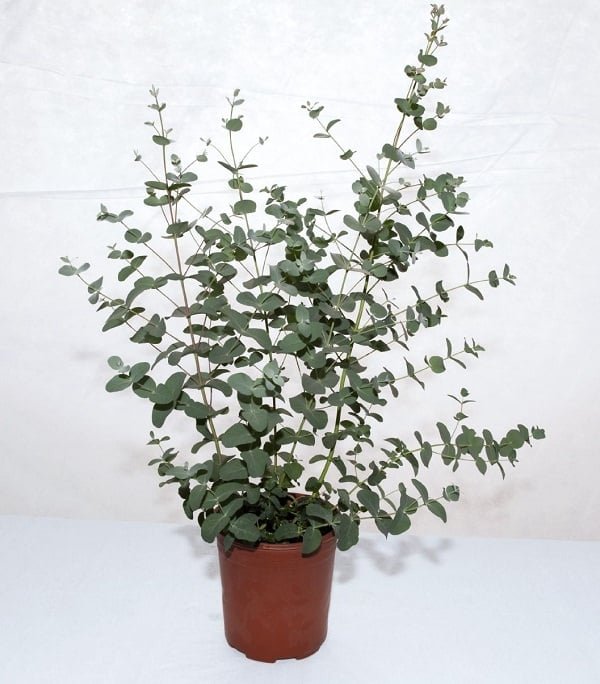
If you are growing eucalyptus as a houseplant and you have a dog then be aware, eucalyptus oil can trigger lethargy and irritate your dog. Even the smell of eucalyptus oil can trigger the bad mood of your dog.
Toxins: Eucalyptus oil
Severity: Moderate
The harmful part of the plant: Any part of the plant
Symptoms: Salivation, vomiting, diarrhea, depression, weakness.
18. Flame Lily (Gloriosa superba)
A beautiful ornamental plant, its flowers look like a flame. It can also be grown as a houseplant and particularly used as a medicinal plant and have a variety of uses in Ayurveda. Apart from all these facts, it is useful to know that like most of the lilies, flame lily comes in the list of toxic plants to dogs. All parts are poisonous but mostly the tubers (swollen, underground stems). The ingestion of flame lily has caused many accidental deaths. It has also been used to commit murder, suicide, to induce abortions and to poison dogs. *Most of the lilies are poisonous.
Toxins: Colchicine related alkaloids
Severity: Very High
Malicious Parts of the Plant: The whole plant. Due to the presence of colchicine, the whole plant is deadly poisonous. The particularly high content of colchicine recorded in seeds and tubers of plants. Superbine is present mainly in flowers.
Symptoms: Salivation, vomiting (bloody), diarrhea (bloody), shock, kidney failure, liver damage, bone marrow suppression, paralysis, death.
19. Ficus Benjamina
Also called weeping fig, it occurs naturally from Southern Asia to Northern Australia and the Solomon Islands. It is the official tree of Bangkok, Thailand.
Toxins: Proteolytic enzyme (ficin), psoralen (ficusin)
Severity: Mild
Harmful Parts of the Plant: All parts of the plant
Symptoms: Contact with skin can cause inflammation of the skin, ingestion may irritate the mouth. Similar symptoms occur when pets come in contact with the Rubber tree plant (ficus elastica).
Also Read: How to Grow Rubber Tree Plant
20. Flamingo Flower (Anthurium scherzeranum)
Flamingo flower contains calcium oxalates that can irritate the mouth and other mild clinical symptoms if ingested.
Toxins: Insoluble calcium oxalates
Severity: Mild
Harmful Parts of the Plant: All parts of the plant
Symptoms: Mucous membrane irritation, intense burning, and irritation of the mouth, lips, and tongue, excessive drooling, difficulty in swallowing.
21. Gardenia
Gardenia is one of the most fragrant flowers in the world. However, if you are growing gardenia as a houseplant, you must know that it is mildly poisonous. All parts of the can cause nausea and vomiting like symptoms to your pet, after ingestion.
Toxins: Geniposide, gardenoside
Severity: Mild
Harmful Parts of the Plant: All parts of the plant
Symptoms: Nausea, diarrhea
22. Geranium
Usually, pets don’t touch this plant, but geranium can cause mild clinical symptoms to your dog or cat.
Toxins: Geraniol, Linalool
Severity: Low
Harmful Parts of the Plant: All parts of the plant
Symptoms: Vomiting, anorexia, dermatitis.
23. English Ivy (Hedera helix)
Beautiful English ivy is one of the best plants you can grow in the shade, even indoors. But the plant must not be ingested as it contains a toxin called saponins and it comes in our list of poisonous houseplants for dogs.
Toxins: Triterpenoid saponins (hederagenin)
Severity: Moderate
Harmful Parts of the Plant: All parts of the plant
Symptoms: Drooling, Vomiting, Diarrhea, Abdominal pain.
24. Peace Lily (Spathiphyllum)
The peace lily is worthy of growing in homes. It can be grown without direct sunlight and requires low care and maintenance. But peace lily contains calcium oxalates if it is chewed by your dog or cat mild clinical symptoms may occur.
Toxins: Insoluble calcium oxalates
Severity: Mild
Malicious Parts of the Plant: The whole plant
Symptoms: Mucous membrane irritation, intense burning, and irritation of the mouth, lips, and tongue, difficulty in swallowing.
25. Schefflera
Another plant that belongs to Araceae family (Dieffenbachia, Calla lily, Arrowhead, Dumbcane, Peace Lily, Philodendron, Pothos, Umbrella Plant, Elephant’s Ear, Chinese Evergreen, and Schefflera), plants from this family contains calcium oxalate crystals that cause injury if chewed.
Toxins: Calcium oxalate crystals
Severity: Mild
Harmful parts of the plant: All parts of the plant
Symptoms: Mucous membrane irritation, intense burning, and irritation of the mouth, lips, and tongue, excessive drooling, vomiting, difficulty in swallowing.
26. Oleander
Oleander needs no introduction; it is a poisonous plant, and we even listed it in 13 most common plants that are poisonous. Oleander is grown as a houseplant too.
Toxins: Cardiac glycosides
Severity: Very high
Malicious Parts of the Plant: The whole plant
Symptoms: All parts of the plant contains toxic cardiac glycosides as digoxin. Its ingestion can cause colic, diarrhea (possibly bloody), sweating, difficulty with coordination, shortness of breath, difficulty in breathing, muscle tremors, and even the death due to heart failure.
27. Amaryllis (Amaryllis sp.)
Amaryllis belongs to the lily family, but it is mildly poisonous when compares to other lilies like Easter lily, daylily, Asiatic lily, tiger lily, lily of the valley and flame lily.
Toxins: Lycorine and other glycosides
Severity: Mild to Moderate
Malicious parts of the plant: Bulbs
Symptoms: Vomiting, depression, drop in blood pressure, abdominal pain, drooling, loss of appetite.
28. Asparagus Fern (Asparagus setaceus)
Asparagus fern is not a fern though its leaves resemble one. Also called lace fern, it is a common houseplant.
Toxins: Sapogenins
Severity: Mild
Malicious Parts of the Plant: Foliage, berries
Symptoms: The consumption of its berries can cause gastrointestinal upset, vomiting, abdominal pain, and diarrhea.
29. Ti plant (Cordyline terminalis)
This tropical houseplant is extremely low maintenance though it is moderately toxic to dogs.
Toxins: Saponins
Severity: Low
Malicious parts of the plant: The whole plant
Symptoms: Vomiting (sometimes with blood), depression, lack of appetite, drooling.
30. Begonia
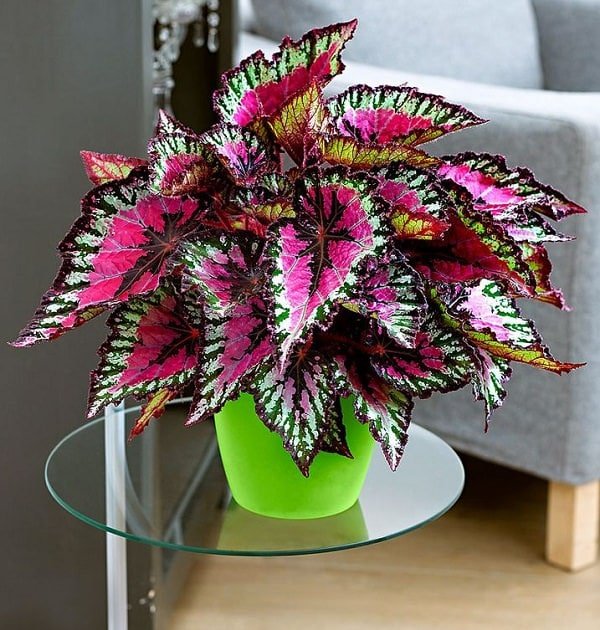
Begonia is one of the most attractive plants you can grow indoors. But it is mildly toxic; it contains insoluble oxalates.
Toxins: Insoluble oxalates
Severity: Mild
Harmful Parts of the Plant: A whole plant
Symptoms: Mucous membrane irritation, intense burning, and irritation of the mouth, lips, and tongue, excessive drooling, vomiting, difficulty in swallowing.
31. Peyote (Lophophora williamsii)
A plant in the cactus family. Popularly known as peyote. It comes from the regions of New Mexico and Texas. It is a useful medicinal and ornamental plant for us but comes in the category of poisonous houseplants for dogs.
Toxins: Mescaline and other alkaloids
Severity: Moderate
Malicious Parts of the Plant: The whole plant
Symptoms: Psychotropic, intoxication, vomiting, diarrhea.
32. Brunfelsia
Brunfelsia whose other popular names are Yesterday, Today, Tomorrow, Kiss-Me-Quick, Lady-of-the-Night contains a stimulant toxin called brunfelsamidine and other toxic agent called hopeanine, which is a depressant.
Toxins: Brunfelsamidine, hopeanina
Severity: High
Harmful Parts of the Plant: All parts of the plant
Symptoms: Irritation of the mouth and stomach (salivation, vomiting, and diarrhea), muscle cramps, muscle rigidity, paralysis of the nervous system, coma.
33. Cactus
Cactus species are mainly grown as the ornamental houseplants. Most of the plants of this family are toxic and create a potential danger to house pets due to their thorns and spikes.
Toxins: Many species have different toxic substances. Spikes are the threat too.
Severity: Moderate to High
Malicious parts of the plant: The whole plant, in particular, spikes
Symptoms: Inflammation of the skin, injury
34. Philodendron
When it comes to easiest houseplants, philodendrons come to mind. Philodendrons are mildly toxic, they contain calcium oxalate crystals, which trigger clinical problems after ingestion.
Toxins: Insoluble calcium oxalates
Severity: Mild to Moderate
Harmful Parts of the Plant: All parts of the plant
Symptoms: Mucous membrane irritation, intense burning, and irritation of the mouth and lips, tongue, excessive drooling, vomiting, difficulty in swallowing.


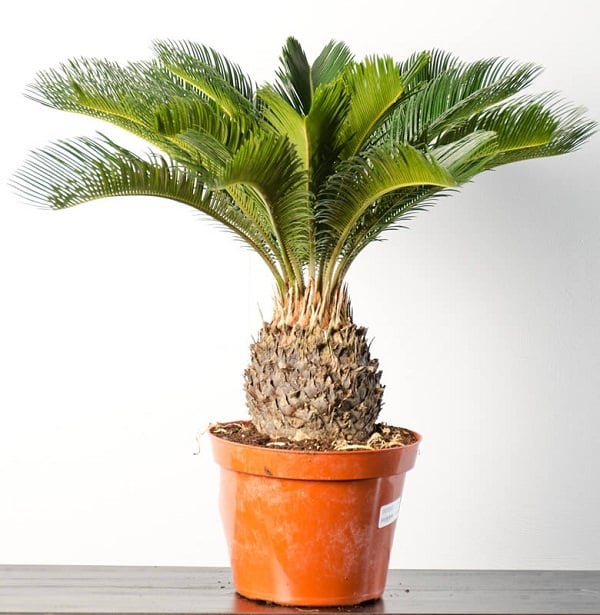
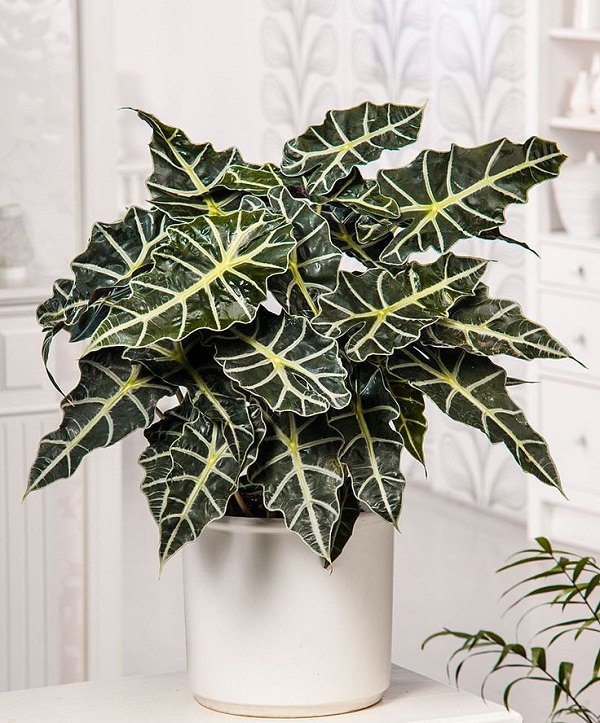
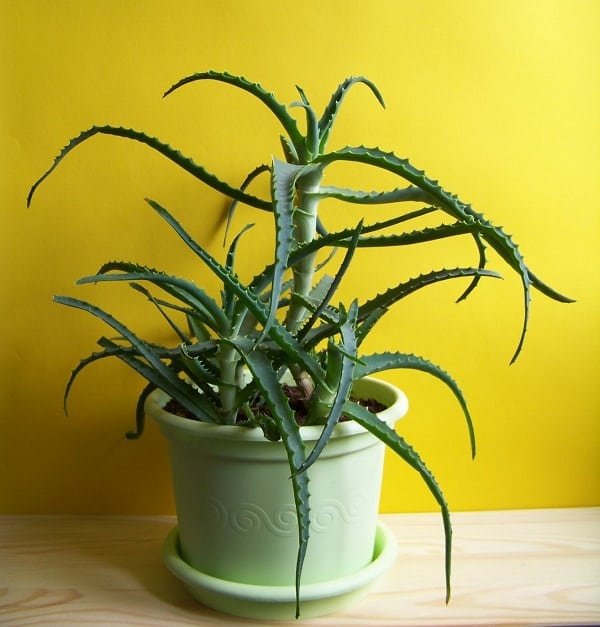
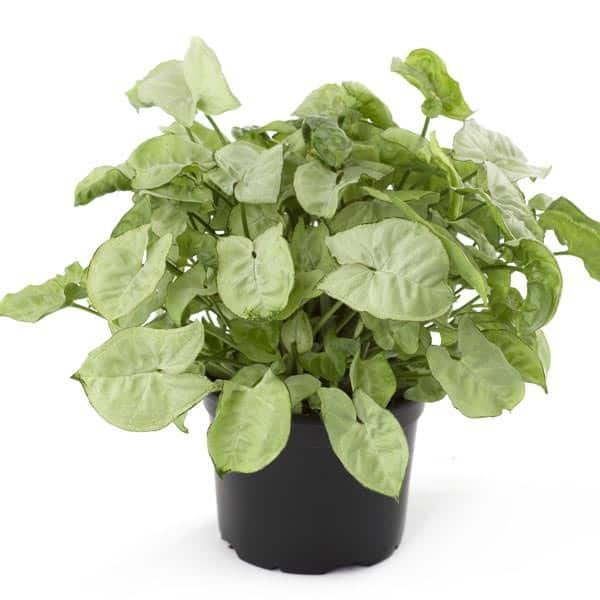

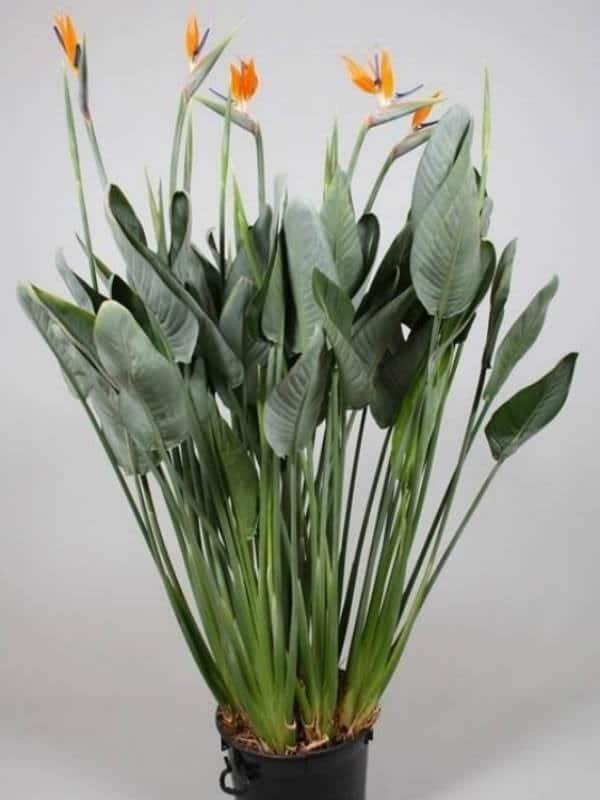
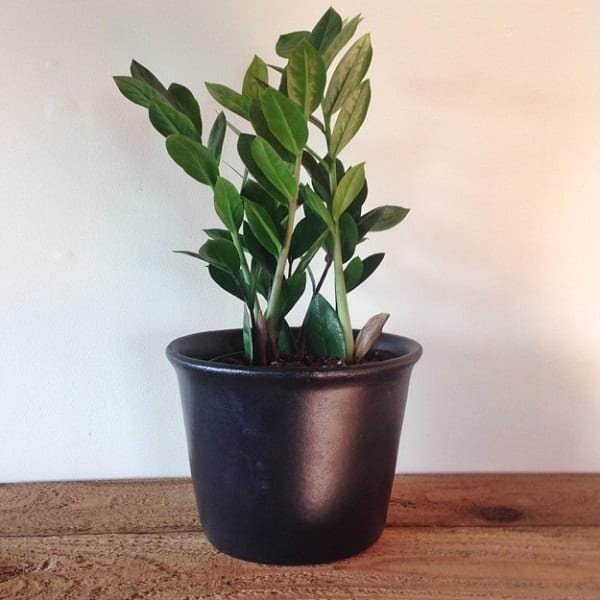

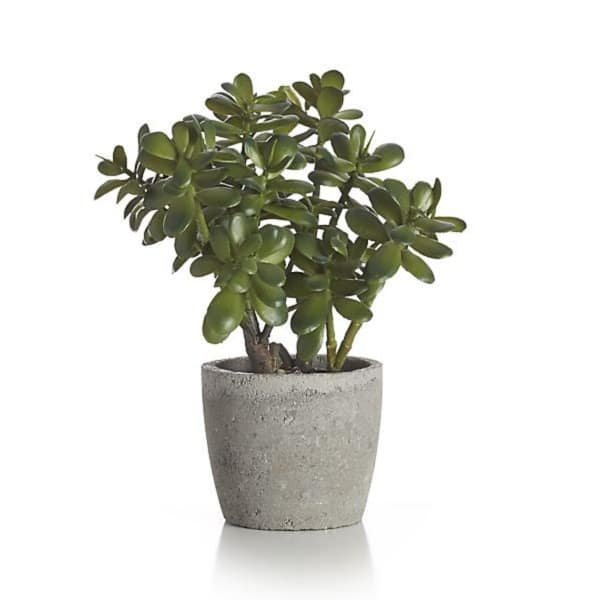
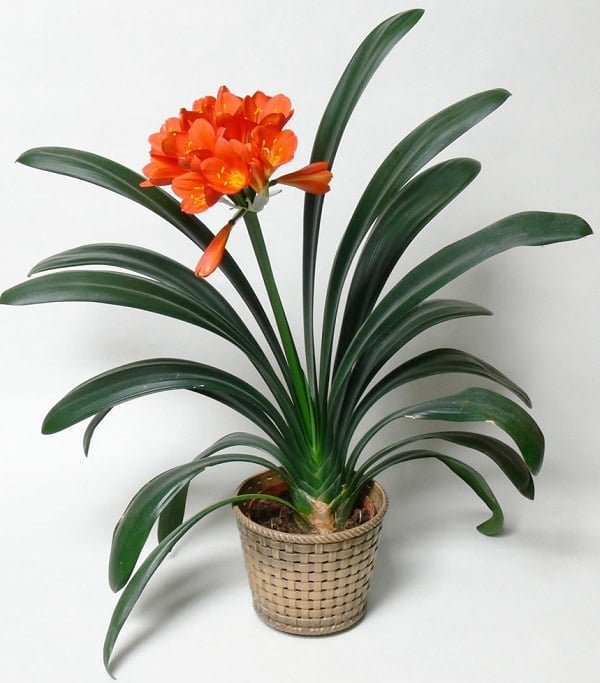
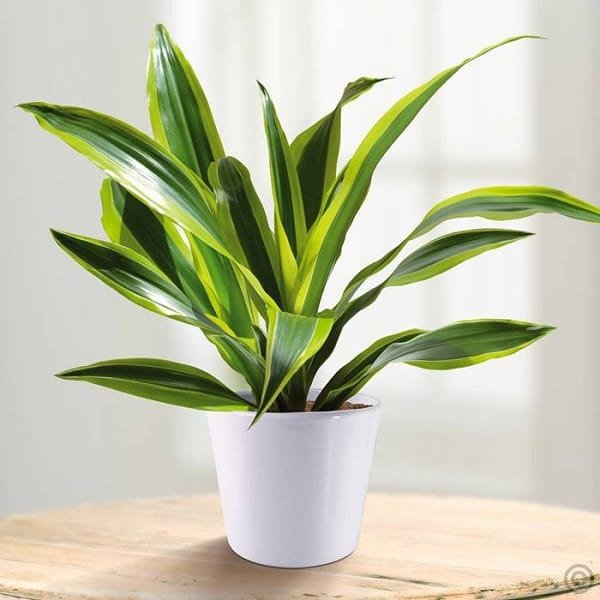




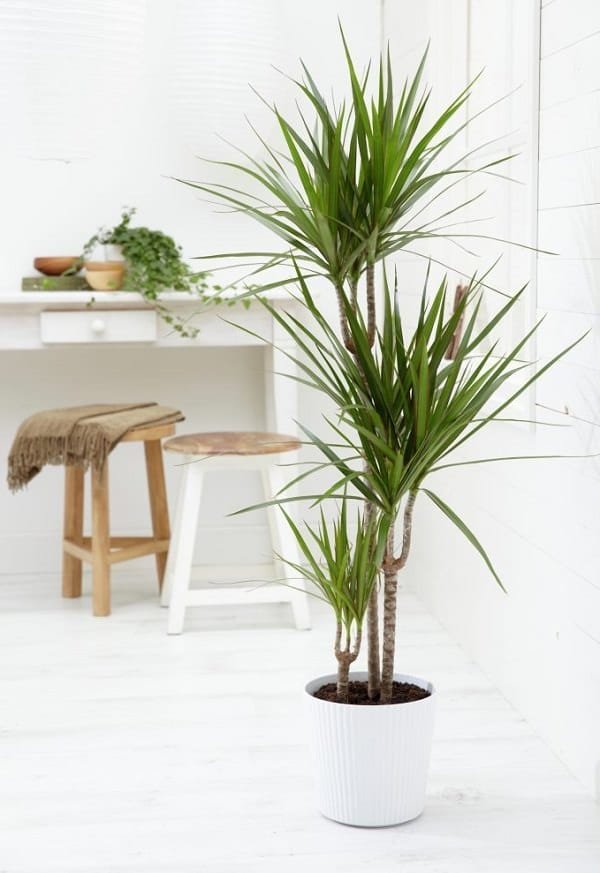
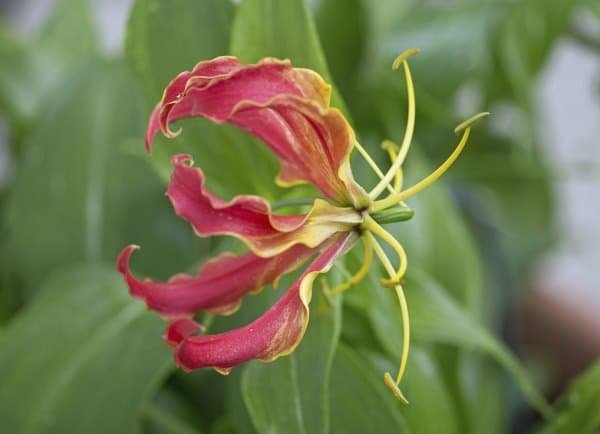
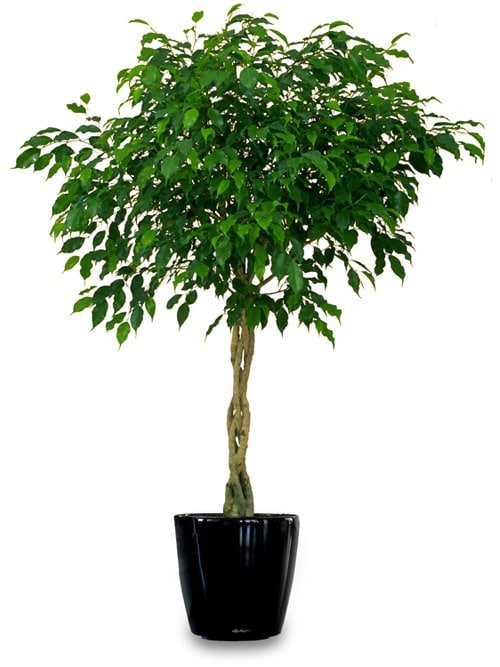

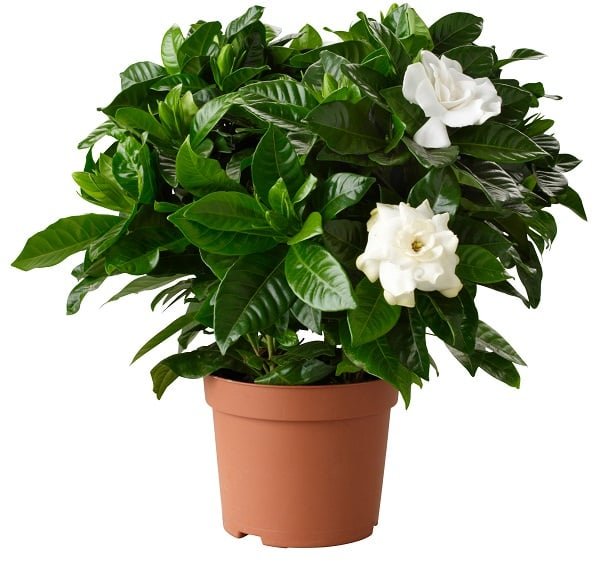

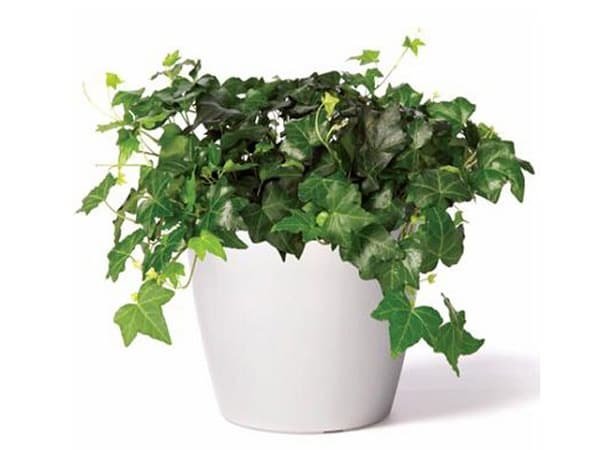
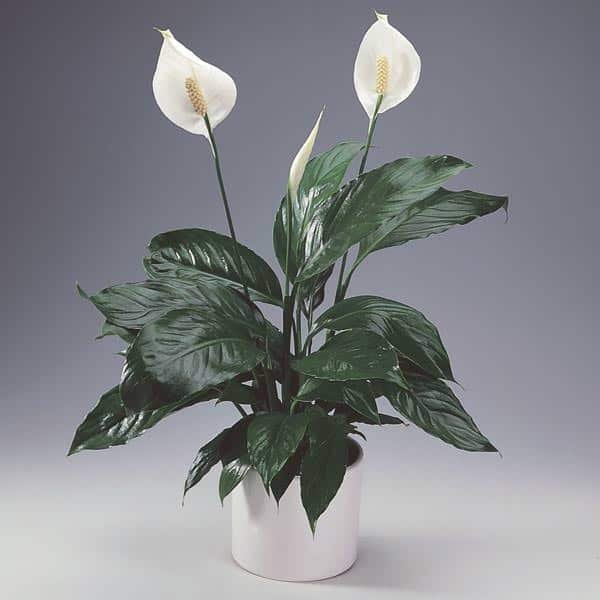
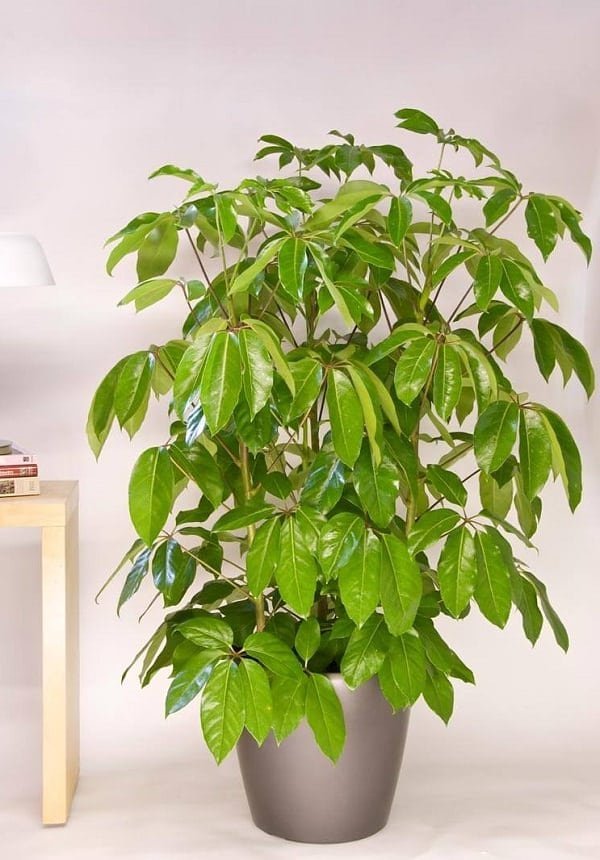


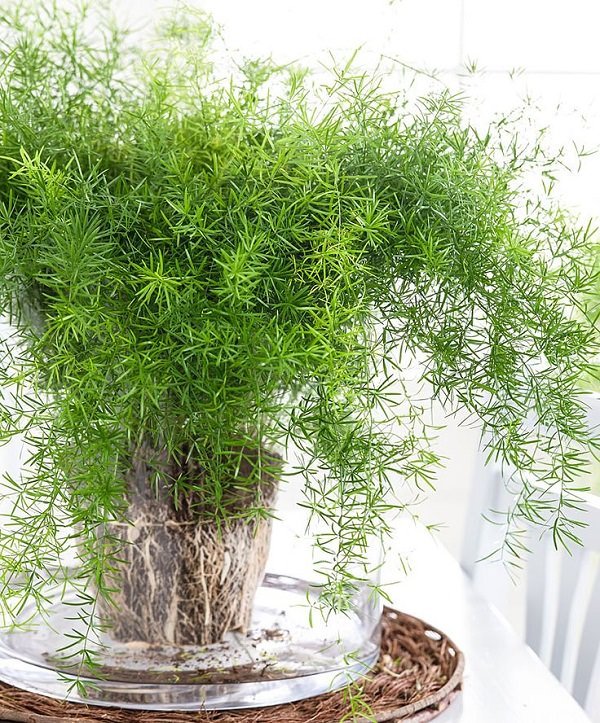
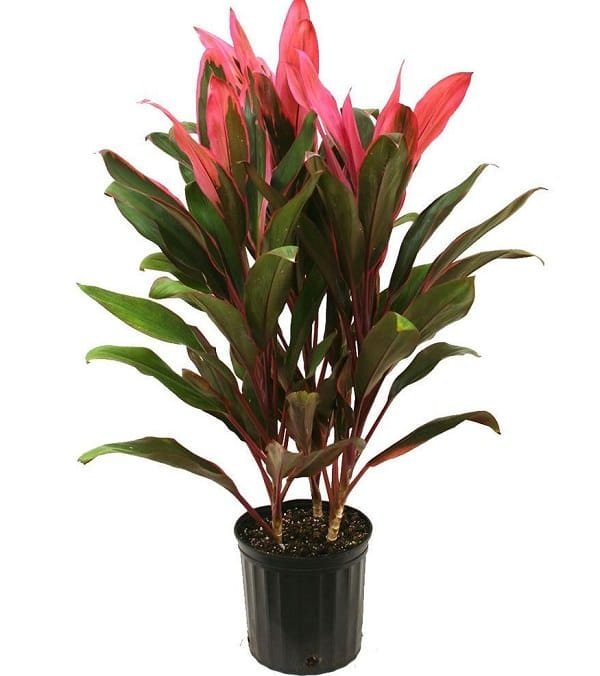
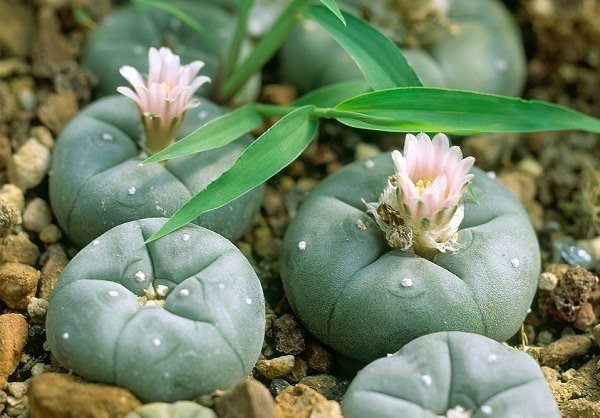


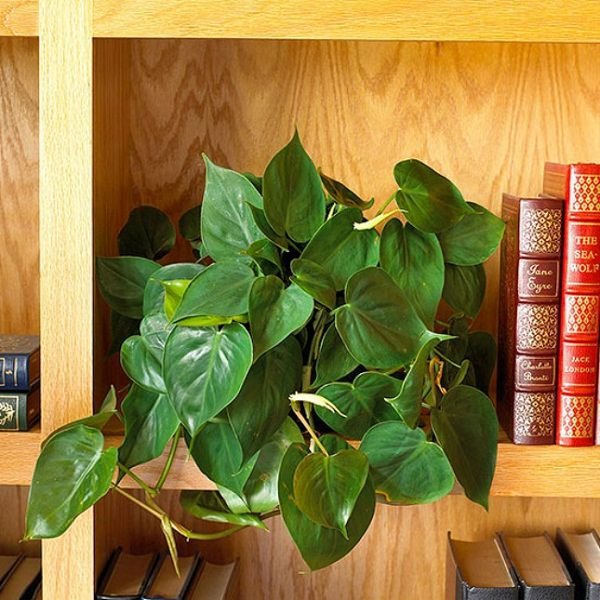


This article contains some important information, but it is mostly obscured by the unimportant. The article should start with the plant species that have the toxicity level listed as “very high,” and “high.” These are the only ones that pose serious threats to animals. The other plants will cause at most some barfing and drooling, but should not be called “poisonous” in the same way as the High Toxicity varieties. Very few animals will try more than a few bites, presumably because they taste bad. In fact, I think some animals “self-medicate” this way. I’m not a veterinarian, but in a lifetime of working with and living with animals, usually with a houseful of plants, I’ve never seen a cat or dog get sick, beyond a bit of barf, from chewing on any of the plants listed as “moderate” or “mild” toxicity.
I totally agree with your viewpoint. No doubt there are some poisonous plants for dogs and other animals but a number of them listed here as moderate need not level as poisonous. Calcium oxalate is found in onion, spinach, figs and a number of plants but these have never been called poisonous.
Onions are considered toxic for dogs
i have 5 dogs and they all eat cooked onions cause they love it when i am full they each get a few mouthfuls and i use onions in everything i cook
Onions are not toxic, but they are a blood thinner. If your dogs eat a fair amount of onions regularly, be aware if they should get cut or scratched. Also take caution when trimming their nails.
Good information for all the pet owners thanku so much
Because so many of the most communally used houseplants are on this hit list, perhaps it would be more helpful to post a listing of commonly used houseplants known to be SAFE for dogs and other pets.
Desert Rose is deadly to any animal! The animal will die a horrible death involving seizures and severe pain.
A few petals falling into a large koi pond killed every fish in the pond and just a few petals caused my goat such severe pain, she had to be euthanized.
The plant shown in the article has white flowers. They turn into a pretty pink color as they get older. Please do not keep this plant anywhere near animals or small children.
Nice post for dogs health..
Thanks it really helped because I have LOTS of dogs. 🐕🐩🐶
Extremely helpful. Thank you.
Thank you for all the info everyone post here is very helpful.👏👍
I wish I had read this article before I bought my daughter 6 plants, two of which are listed. She has 3 dogs, and she wanted some plants so I looked for low maintenance house plants. Nowhere did several websites mention the toxicity danger to animals/small children. Now she has 2 plants that she will have to get rid of due to the risk, one dog thinks he is a giraffe and loves to eat leaves.
A wonderful help and I am so glad to have found you! My 6 month Frenchie wants to chew every plant she comes across and I have two tall cane plants that will have to go. Better them them than Her!
I usually check b4 I buy my plants
luv my dogs 2 much
A very useful information
tq
hv a nice day 😉
I run and own a garden centre and we advice clients with house pets to take extra care and just a safety precautions when buying plants. This article is very helpful. To be well informed beats the odd of future mishaps. Gardeners, garden enthusiasts wear or uses tools and special equipments when handling plants… it wouldn’t hurt to do the same with our furry family.
What about Monstera Deliciosa?
Hi, I need to use essential oils in my home mister for wellness. Like Lavendar, eucalyptus, sage and many others. I just got a dog two days ago. Due to toxicity do I need to stop?
Absolutely! Misted essential oils are very toxic to cats and dogs, as they are when topically administered and ingested. Ditch the mister
I love this website! Have a wonderful new puppy and all my houseplants are toxic. What about poinsettias?
As a pet parent, you know it’s the status quo to expect the unexpected and prepare for anything. You also know that while your dog is *
my 12 week old malepoo ate ate something and left her body life less.. I have three of these plants. i took her to the vet and they kept her over night. now I can tell the vet what she might have consumed. they said her heart beet was very low. I just went to the rest room for one minute and came out, she was lying on the floor not moving. with her tongue hanging out of her mouth. I wish i would of looked this up earlier. The vet told me a house plant couldn’t of made her like this. Now I know she could of ate one of my plants leaves..
This was very helpFULL.
THANK YOU..
SINCERELY
GENA